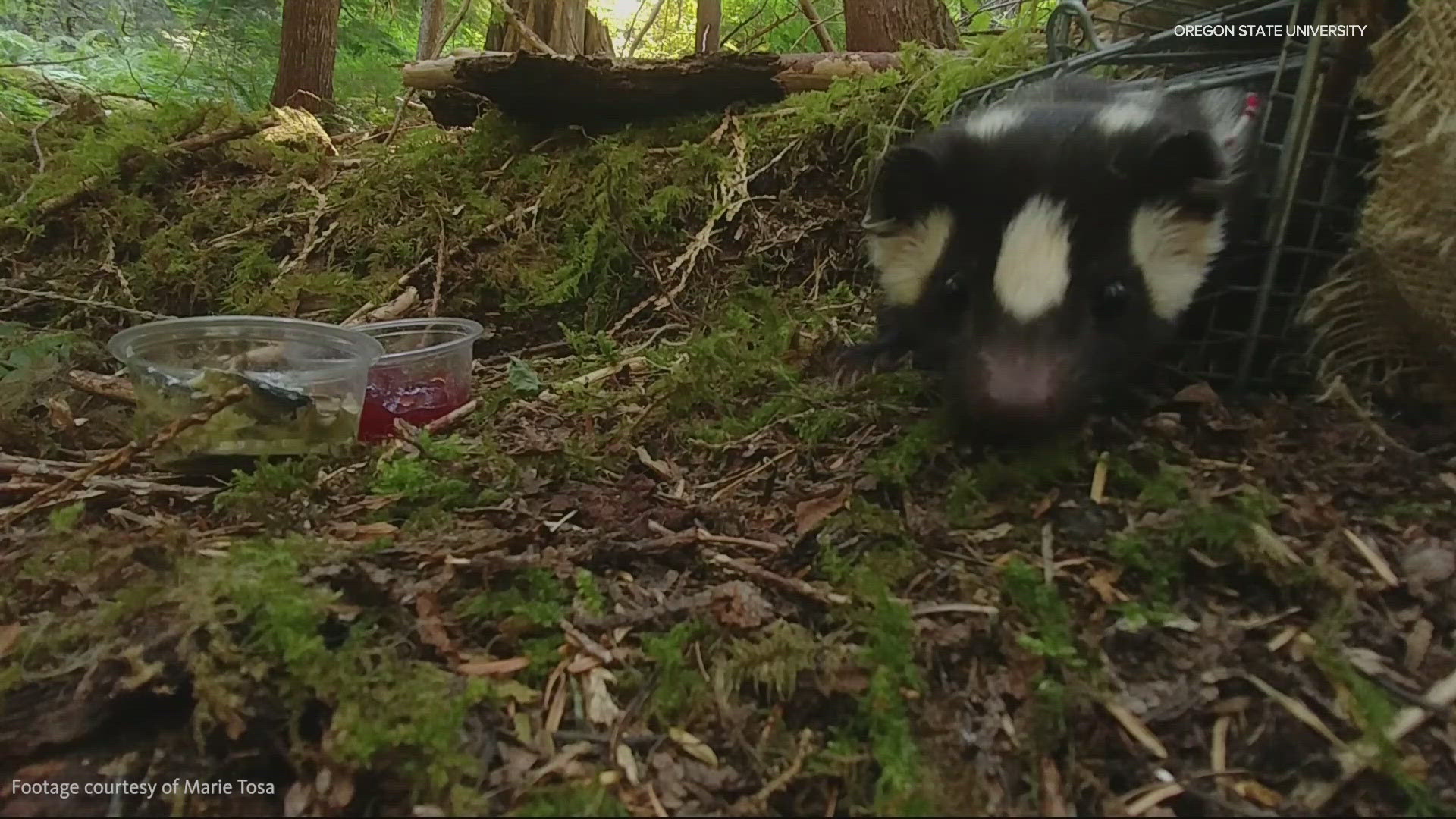PORTLAND, Ore. — There's an elusive carnivore roaming the forests of Oregon — although it's probably not the type of carnivore you'd typically think of. A team of researchers at Oregon State University just released a study looking at the habits of the western spotted skunk over the course of two years between 2017 and 2019.
Marie Tosa, an undergraduate student at OSU at the time; Taal Levi, an associate professor at Oregon State's College of Agricultural Sciences and advisor to Tosa; and Damon Lesmeister of the U.S. Forest Service's Pacific Northwest Research Station in Corvallis conducted the study on the western spotted skunk.
"Which is a really, really cool critter that we just don't really know very much about." Tosa told KGW News in an interview.
The western spotted skunk is different than your typical skunk; it only weighs about a pound or two, with spot-like markings instead of stripes, and is the size of a squirrel. The researchers studied the skunk in the H.J. Andrews Experimental Forest, a nearly 16,000-acre research forest about an hour east of Eugene.
"They have these individually identifiable markings, but it's really hard to tell because they can move in different ways. They can wiggle, their fur gets matted down in ways that makes it hard to actually ID those individuals from those spots," Tosa said. "They function really importantly as this small mammal that can control things like disease and outbreaks of small mammals that humans might not like."
Once captured, Tosa would outfit the skunks with a radio collar to track their movements. The team studied their range and found they would travel around 12 square miles as their home range, looking for food and places to sleep. Tosa said that range is larger than other animals their size; even a deer, for instance, only covers a half a square mile.
"This was really surprising to us. Compared to the eastern spotted skunk, their home ranges are much bigger." Tosa said.
She also learned that the western spotted skunks prefer a mix of forest, but like the old growth forests better.
"We think that they're foraging for food there, but then they do need these big structures like snags and live trees with heart rot on the inside," Tosa said. "They're kind of hollow on the inside, or these big logs for them to rest in during the day."
Tosa said their population is declining. A release from the university said the skunk's population had declined by about 90% between 1940 and 1950, and by 99% as of 1980. It is now listed as vulnerable by the International Union for Conservation of Nature and was considered for listing under the Endangered Species Act.
Tosa noticed a drop during the study in the winter of 2019 when there was a cold, wet snow.
"We're not really sure why that happened, but one of the reasons that we think that that happened was because these skunks have really high metabolisms and really thin skin," Tosa said. "So, when it's really cold and really wet, we think that they're not able to maintain their body temperature."
Don't expect to see these creatures in the wild; Tosa says they are more afraid of you than you are of them, and they also are more active at night.
Tosa had this advice if one does cross your path: "Just enjoy the fact that you got to see one of these creatures, it's so rare to see them in the wild."
In the process of studying the animals and trapping them, Tosa estimates she was sprayed between 50 and 100 times, calling the odor a garlicky smell that eventually turned sweet. She said a paste of hydrogen peroxide, Dawn dish soap and baking soda helped remove the smell.
"These western spotted skunks are just feisty little critters. Every time we handled a skunk, we inevitably got sprayed by them."
The research was also recently published in Ecosphere, an ecology journal.

